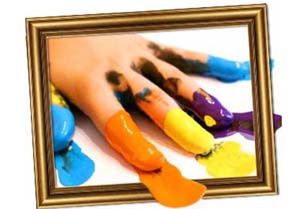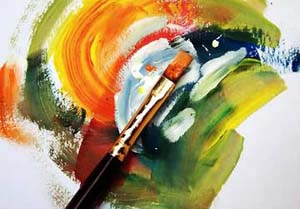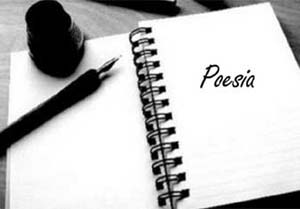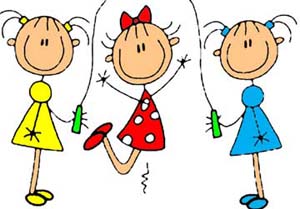 |
|
| Appunti superiori |
|
 |
|
| Appunti superiori |
|
| Visite: 1541 | Gradito: |
Leggi anche appunti:VedutismoVEDUTISMO Manifestazione artistica veneta i cui principali esponenti sono Il progetto surrealistaIl progetto surrealista Le cosiddette avanguardie storiche nacquero in quel L'arte delle parole dal preromanticismo al primo novecentoL'ARTE DELLE PAROLE DAL PREROMANTICISMO AL PRIMO NOVECENTO Le parole non sono |
 |
 |
LIFE
Birth of Claude Oscar MONET on November 14th in Paris.
Claude Monet meets Eugène Boudin who encourages him to paint out of doors.
Monet enters the Swiss Academy.
Monet's paintings are submitted for the first time to the official Salon. Camille Doncieux his lady friend and Bazille pose for Le Dejeuner sur l'herbe.
Monet tries to commit suicide.
Monet marries Camille, Courbet is his witness. From this relationship are born two children
Death of his father. Monet settles at Argenteuil after visiting the Netherlands.
Monet exhibits 'Impression : sunrise' at the first Impressionist exhibition in the studio of Nadar.
Monet meets Ernest and Alice Hoschedé.
His family settle at Vétheuil in compagny of the family Hoschedé.
Death of Camille.
self-portrait with a beret
Monet rents a house at Giverny. He will stay there for 43 years.
Monet exhibits in New-York thanks to Durand-Ruel.
Monet exhibits with Rodin.
Death of Ernest Hoschedé.
Monet paints the Rouen Cathedrals series. He marries Alice in July.
Monet paints several views of the Japanese bridge. He takes several trips to London and
paints views of the Thames.
First problems with his eyesight. Monet discovers Venice.
Death of Alice.
Death of Monet's eldest son.
Claude Monet works on The Water Lilies.
Monet is nearly blind. He has an operation from the cataract in one eye. His sight improves.
ca. 1923 - 1926 In February Monet is still painting. But he suffers from lung cancer.
He dies on December 5th. He is buried in a simple ceremony at Giverny.
MONET as an ARTIST
Claude Monet was an artist by trade. He never earned money from anything from his paintings. He began at school selling caricatures of his teachers.
All his feelings from happiness with his family
to the painful death of his wife Camille turned into subjects for paintings. It
seems that he didn't know how to express himself except on a canvas.
He began painting landscapes very early as the Norman painter Eugène Boudin encouraged him to do.
Impressionist art is based on the use of color, which has to 'draw' the motive without resorting to line.
Monet wasn't interested in trditions, he painted in 'plein air' and he studied natural light.
He try to represent only what was visible in a determinated moment of the day, without transfosm the effects of light on colours and shades. He was obsessed by light effect and try to resolve pictorial problems, that no artist before tried to do.
At the beginning of his career, Monet used dark colors, as he did in the 'Studio Corner' marked by black shades. His painting evokes Courbet and the Realist School.
From 1860, Monet abandonned dark colors and worked from a palette limited to pure light colors, combining them, with their complementary, to give the impression of different luminosity and particular tonalities.
Pure black is rarely used by the impressionist painters. Monet obtained an appearence of black by combining several colors : blues, greens and reds. He eliminated almost completely black from his painting, even in the shadows, that are colourful too.
Avoiding black was so deeply anchored in Monet's manner that when he died, his friend Georges Clemenceau would not stand the black sheet covering the coffin. He exclaimed : 'No ! No black for Monet !' and replaced it by a flowered material.
In 1908, aged 68, Monet was affected by cataracte at both eyes, he began to loose sight. The first signs of this cataracte can be found in the paintings he made in Venice in 1908.
Cataracte is a progressive opacity of the crystalline lens that filters the colors. Details fade out, shapes become unclear.
When his vision altered, Monet went on with working. He could know what color he used by the labels and the unvarying order he set them on the palette. Monet was used to paint exactly what he saw. Because of his hillness his paintings are gradually invaded by reds and yellows.
In 1922. He was then almost blind.
Nevertheless, his friend Georges Clemenceau convinced him to undergo surgery. In 1923, he could see again with his right eye, wearing special green glasses. But his vision was still altered, especially te colours, and he refused to undergo surgery for the left eye.
In spite of this handicap, Claude Monet continued to paint until 1926, a few monthes before he died.
THE DIFFICULTIES OF WORKNG EN PLAIN AIR
Monet wanted to represent the sensations that a particular landscape in a precise moment of the day suggested him. To give the istantaneous feelings he had to be in the same place at the same time, with the same models in the same positions in every moment in wich he was working during different days. To combine all this features was something very difficult, comporting by working an plain air.
IMPRESSION: SOLEIL LEVANT
In 1874 some young artists decided to exhibit their works, wich were refused by the official Salon. Artist like Renoir, Degas, Pisarro, Cezanne and Monet grund the "Painters, Sculptors and Printmakers Society.", and the ehibition took place in the studio of the photographer Nadar.
Monet displaied seven sketch and five paintings, unter them there were "Poppy field" and "Impresion: soleil levant".
This work was the most criticised in negative way; especially because of the the stilistic elements considered too semplified, without details and there are no conception of space.
The name of the movemet "Impressionism" was given by the french art critic Louis Leroy, who had no positive considerations about this painting, wich he called "approssimative" but that became the symbol of the movement and of the artist.
The public too was very vexed in front of the novelties of this work. This kind of reaction might appear exaggerated to us, but at that time anything revolutionary, even on the aesthetic level, was seen as highly threatening by the bourgeoisie, who feared for the security they had only just regained.
This painting is an oil on canvas, painted in 1872, while Monet was observing the harbour at Le Havre. It is conserved in the Museum Marmottan in Paris.
Monet was fascinated by the changing sky, shimmering water and anything that lacked a fixed shape. He spent his life trying to catch the ceaseless dialog between water and light.
Monet represented the sunrise, all involved by a blue ad grey mist.
We can clearly distinguish only the sun. All the other figures are only sketches and quick strokes of the brush. The boats, seems to be only two shades. The city in the background has no borders, only some lines making visible some cimneys with therir smoke.
Even if the scene is a bit dark the artist made no use of black colour, only combinations of blue, grey and green, that made a strrong contrast with the warm red-orange colour of the sun.
He reported only what his eyes captured at the first sight. He wasn't interested in giving us a perfect reproduction of forms and space, he reported only his feelings, his sensations; he put no attenction to follow rules of the Salon.
Déjeuner SUR L'HERBE
It is his first masterpiece. (1865-1866)
Monet used the same theme and the same style as Manet two years before for his own 'Le Déjeuner sur l'herbe', a painting which scandalized people at the Salon in 1863.
But the commom things are only the presence of some persons in the wood.
The richness in clothes, the oreder in the assemble of people, the sunny day , the preparation of a Sunday party and the role of light made this painting different from Manet's one; where we can't understand the presence of nude figures and wich was a quite dark composition.
In this painting we find clearly the influence of Courbet and of the Realist School, who usually painted his subject on a dark background, to exalt the effects of lively colours and light.
Monet uses only two models for all the 13 figures: his girfriend Camille and his friend Bazille.
We can notice the predominant role of the light, wich created particular shadows and colours, trought the leaves of the wood.
He wanted to show this painting to the Salon, illustrating his new idea of painting en plain air, wich was something revolutionary.
This project was a work of seven meters, but remains incomplete after the critics of Courbet and because of the long time of execution it couln't be complete by the time of exhibition.
So Monet left this painting with other to pay the rent of his studio and today we have only two parts of this work: the central detail and the links part, conserved in Paris.
To have a complete vision of this work we can look at the Studio of this work, wich is in Moska.
In this painting we can see the whole composition, but Monet modified it in the final work. In the two details we see some differences in clothes and figures; we can also understand the presence of a more brilliant light and intense colours.
When Monet painted this work he was 25, he paid attenction tho details, outlines and light. During his artistical growth he changed his style, developing a singular one; wich was made of subjectivity, quik brushwork and use of pure colours. He didn't pay attenction to details, only to represent his idea of what he was seeing.
(for example: contrast between this work and "In the wood of Giverny.")
NYMPHÉAS
Monet devotes his last 29 years to the representations of the Nymphéas, in 250 paintings.
'Suddenly I had the revelation of how magical my pond is. I took up my palette. Since that time I have scarcely had any other model.'
He observes and reportes on the canvas the sensations given by his garden in Giverny, which himself attended, he says: 'I'm good for nothing except painting and gardening.'
The attenction of the artist is particulary attracts by the pond with the nymphéas, surrounded by esotic plants and weeping-willows. Over the water Monet built a brigde, like the ones present in the japanese prints on the walls of the house.
The exotic subjests (the Japanese bridge, the exotic plants) were intruduced in Europe from 1854, when Japan was obliged to have commercial relationship with Occident, showing their products in several exhibitions. The Japanese art influenced Impressionism in the simplification of the subject, the representation of daily acts, the spontaneity of the figures and in the "spiritual" interpretation of nature.
The bridge is the only element that gives to the picture the sense of perspective, space and reality. Monet combines in a natural way the colours of the plants with the light of the sun with the bridge, using the sfumato.
He gives us an abstract and informal painting. He doesn't follow traditional rules, to create a work, where the view isn't directed to a central point, but it is free to discover the whole painting with fluency. The water and the light symbolize something that is moving, changing, not static, like the sesation of the artist that paints: the second time nothing will be like the first one.
During this project Monet has his first problem with his sight, but he doesn't stop.
He begins to work at a project called "Big decoration".
Following the signing of the Armistice, Monet offers to donate them to France in 1982. Theses paintings will be installed in an architectural space designed specifically for them at the museum of the Orangerie in Paris, that now it'e called the "Sistine Chapel of Impressionism".
Even in this case Monet consideration is: 'The subject is of secondary importance to me ; what I want to reproduce is that which is in between the subject and me.'
In these last works Monet summarizes his whole artist life: colour - light - emotion.
QUOTATIONS
THE GARDENS
At Argenteuil Monet discovers the happiness of owning a garden. Renoir represented his friend painting this canvas in his work 'Claude Monet painting in his garden at Argenteuil'.
' The subject is of secondary importance to me ; what I want to reproduce is that which is in between the subject and me.'
'Are the colors I use as interesting as all that ? I don't think so, considering that you can achieve more brightness with any other palette. The main thing is to know how to use colors, the choice of which boils down to a matter of habit.'
The subject of my painting is not light and shade, but the painting placed in light and shade.'
'They are bringing the canvases to me one after the other. A color that I had found and sketched on one of these canvases yesterday reappears in the air. I am quickly given this painting and strive to fix this vision as permanently as possible. But it usually vanishes as fast as it sprang up, making way for another color I had already painted days ago on another study instantly put in front of me And that is the way it is all day long.'
'I am looking for something I have not done before, a shiver my painting has not yet given.'
'And I tell myself that whoever says he has finished a painting is terribly arrogant. Finished means complete, perfect, and I am working hard without moving ahead, searching, feeling my way without achieving much'
'Everything I have earned has gone into these gardens.'
'I want to paint the air in which the bridge, the house and the boat lie. The beauty of the air in which they are, and that is nothing other than impossible.'
'Whereas you are philosophically seeking the world in itself, I am simply focusing my efforts on a maximurm of appearences in close correlations with unknown realities.'
'I'm good for nothing except painting and gardening.'
'London isn't a place where one can complete a work : you cant find twice the same effect'
'I can't send you any canvas from London, because for the work I'm doing I need to have them all under my eyes, then what I'm doing here is very delicate.'
Claude Monet to Paul Durand-Ruel
'I know that to really paint the sea it has to be seen every day at any hour and from the same spot to know its life at this very spot ; that's why I'm repeating the same subjects up to four and even six times.'
' I am in a beautifully wild landscape, a pile of terrible rocks and an unbelievably colorfoul sea.'
'It took me time to understand my waterlilies I had planted them for the pleasure of it; I grew them without ever thinking of painting them A landscape doesn't permeate one's being in one day '
'Suddenly I had the revelation of how magical my pond is. I took up my palette. Since that time I have scarcely had any other model.'
'There was a stream, the Epte, which came down from Gisors on the boundary of my property. I opened up a ditch so that I could fill the little pond that I had dug in my garden. I love water but I also love flowers. That's why, when the pond was filled, I wished to decorate it with plants. I took a catalogue and made a choice any old how. That's all.'
'The effect varies unceasingly, not only from one season to another but from one minute to the next, since the waterlilies are far from being the only thing in the show ; as a matter of fact, they are merely the accompaniment.'
'The motif's essential is the mirror of water whose aspect is constantly being modified by the changing sky reflected in it, and which imbues it with life and movement.'
'These landscapes of water and reflections have became my obsession. They are far beyond my old man powers and despite everything I want to succeed in conveying what I feel. I destroy some I start over again And I hope something will finally come from so many efforts.'
'Suddenly Monet grabbed up his palette and brushes. 'The sun is out again, 'he said, but at that moment he was the only one who knew it. Look as we might, we still saw nothing.'
'I am marvellously well to paint ; it is the funniest you can find, houses of all colors, mills by hunderds, delightful boats.'
'It's admirable, but enough to drive a poor painter crazy - impossible to render with our poor colors.'
'Monet is working hard, he has been completely gripped by Venise. '
Alice Hoschedé Monet
You will come to Giverny to see all these marvels, won't you, these admirable reflects, this pearly water that he alone can give back.'
Alice Hoschedé Monet
'The weather is wonderful by now, even if it is a bit cold in the morning, it is so beautiful that we do not have any time to think of it.'
Alice Hoschedé Monet
 |
| Appunti su: Claude Oscar Monet informayioni principali, |
|
| Appunti Pittura disegno |  |
| Tesine Poesia |  |
| Lezioni Gioco |  |